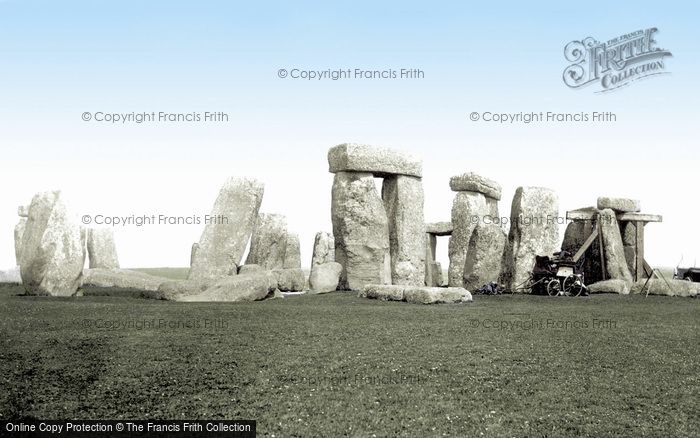Sir Edmund Antrobus (then owner) had commissioned the architect John Jenkins Cole to give advice on how to secure the parts of the monument that an article in The Times (August 1881) had highlighted as being in danger of falling. Cole, in a letter to The Times, wrote:
With reference to a paragraph in The Times of this day, it will perhaps be of interest to the antiquarian societies mentioned that instructions were lately given for a careful examination of the supposed insecure part of the outer circle of Stonehenge and for steps to be taken to avoid an accident. I propose to do so shortly, and also to ascertain the exact degree of inclination of the leaning stone and to test it by photographs taken 22 years ago. It is very doubtful whether any movement has taken place within this century.
It is useless to urge on the owner of Stonehenge (it is often forgotten that there is an owner), Sir Edmund Antrobus, that the great trilithon which fell in 1797 should be reinstated. The later baronet would not hear of it, neither will the present one. He wrote respecting the outer circle – ‘To restoration I am distinctly opposed, but this might be considered in the light of preservation, not only of the monument, but of its observers.’There was outrage at the insertion of the timber scaffold in both the local and national press, such that Antrobus was forced to defend his actions on the basis that stones 6 and 7 were definitely shifting their position and posed a danger to the visitors to the site. He himself was vehemently against any ideas of re-erecting stones but felt it his duty to at least prevent them falling on people:
This relatively minor intervention prefaced a much more extensive set of engineering projects, triggered by the collapse on 31st December 1900 of stone 22 and lintel 122 on the western side of the monument.There is no doubt the Eastern Trilithon was moving – the cross stone was springing, and it might have fallen at any moment. If I could have bound it to fall by night, with an engagement that no visitor should be present, so entire is my detestation of restoration of such a monument I think I should have been tempted to agree to it, and have left all alone; but in what Court can I enforce adherence to the engagement?
Francis Frith's 1887 picture shows Cole's scaffold in place:
